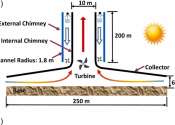24/7 solar towers could double energy output
If you want to improve the output of solar energy systems, why not also run them at night? That's the question researchers in Qatar and Jordan addressed as they successfully devised a system that promises to more than double ...









